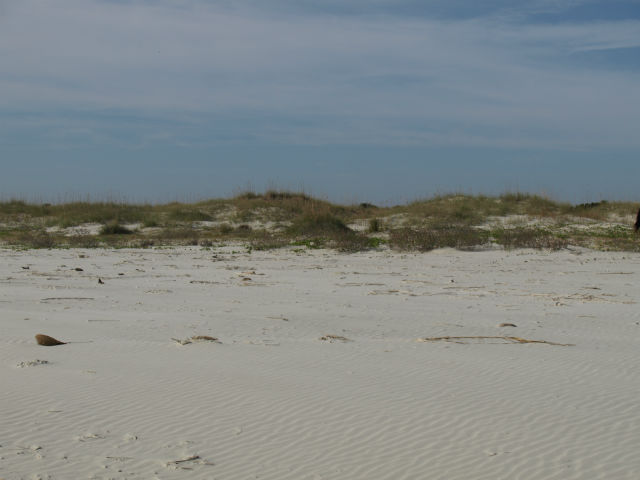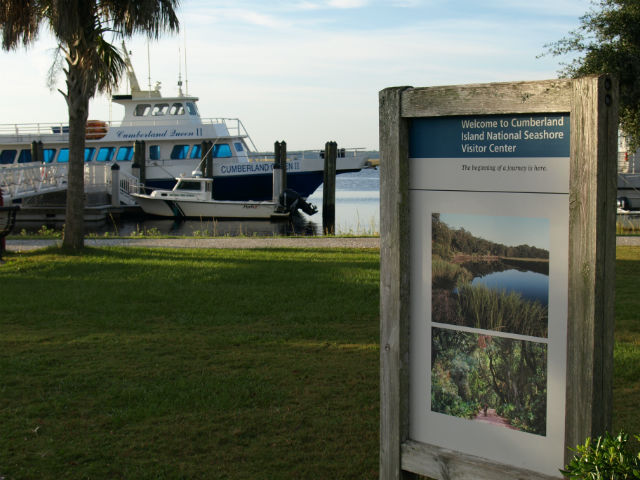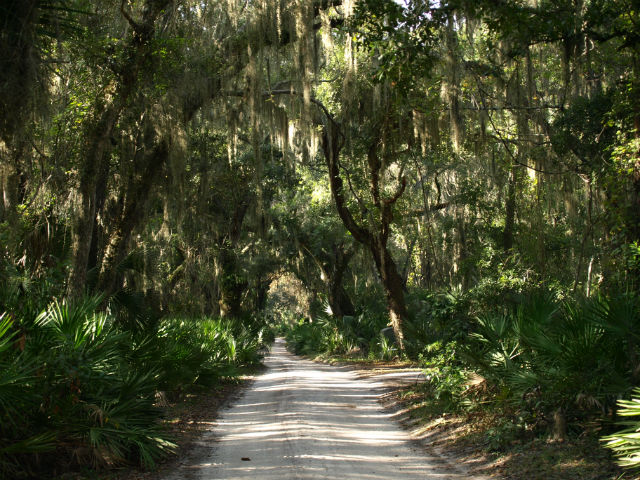It’s been a few years since we heard about Cumberland Island National Seashore. Really heard about it – from an outdoorsy friend who has seen her share of wild places around the world and knows about these things. She raved about it and that immediately put this National Park Service site on our must-do list. Luckily, it fit in perfectly with this trip’s theme of exploring what is unique about life along the Atlantic coastline.
Cumberland Island sits on the very southern tip of Georgia – cross the St. Mary’s River and you are into Florida. It’s the largest barrier island along the Atlantic coastline, and definitely one with the best-preserved wilderness. That’s because Congress stepped in and designated the north part of the long, narrow island as Cumberland Island Wilderness Area, with all its protections and legislations. As Park Ranger Maggie Tyler told us, “It’s supposed to be an area where man is only a visitor.”
Cumberland Island is not somewhere you just stumble onto. You’ve got to really want to go there and a visit requires some planning. For starters there is a cap of 300 people per day. Second, the way on and off the island is by passenger ferry service only. Third, there are no commercial services on island (except for bike rentals at the ferry dock) and to get around you either bike the main road (no bikes on the trails) or hike. Visitors need to take food, water and whatever else they need for their time on island.
It’s the serenity and wilderness that draw people to Cumberland Island. The beaches and sand dunes are pristine. One-third of the state’s sea turtle nesting grounds are on the beaches of Cumberland Island. The mature maritime forest of live oaks, tall saw palmettos, myrtle and holly create a thick church-like canopy. There is a long, dirt roadway called the Grand Road that runs north-south – it is protected on the National Register of Historic Places and “has not changed in centuries.” Add in the island’s saltwater marshlands – the perfect stopover for migrating birds travelling along the Atlantic Flyway – and what you have is an intact, stable barrier island environment. These days, this is a rare thing.
It may be protected from the impact of human development now, but this was not always the case. At the turn of the 19th century, wealthy families from the north came to the island to escape the harsh winters. Over time, 90 per cent of the island was purchased by the Carnegie family (whose fortune was in steel and railroads) and they built mansions that showcased the elite lifestyles of the Gilded Age. Two of these homes remain – one is in ruins and the other, Plum Orchard, is a popular tour stop for visitors who want to roam the partially-furnished rooms to see how the one per cent lived at their winter escapes.
In the mid-20th century the homes and the land were passed to the National Park Service and under its stewardship the island is returning to its natural state of wilderness.
Cumberland Island lived up to its hype. It is a place of beauty, of solitude and of purity. If this is the type of shoreline experience you are jonesing to find, you need look no further.
***
Looking to camp? It is possible to stay on the island but you must make a reservation and bring all of your supplies. The sites are beautiful but have no water, electricity and there are pit toilets. We stayed just a few miles away from the village of St. Mary’s at the lovely Crooked River State Park. The sites were well spaces and heavily wooded and there were some nice walking trails with great views over the river. It was also very dog friendly.




